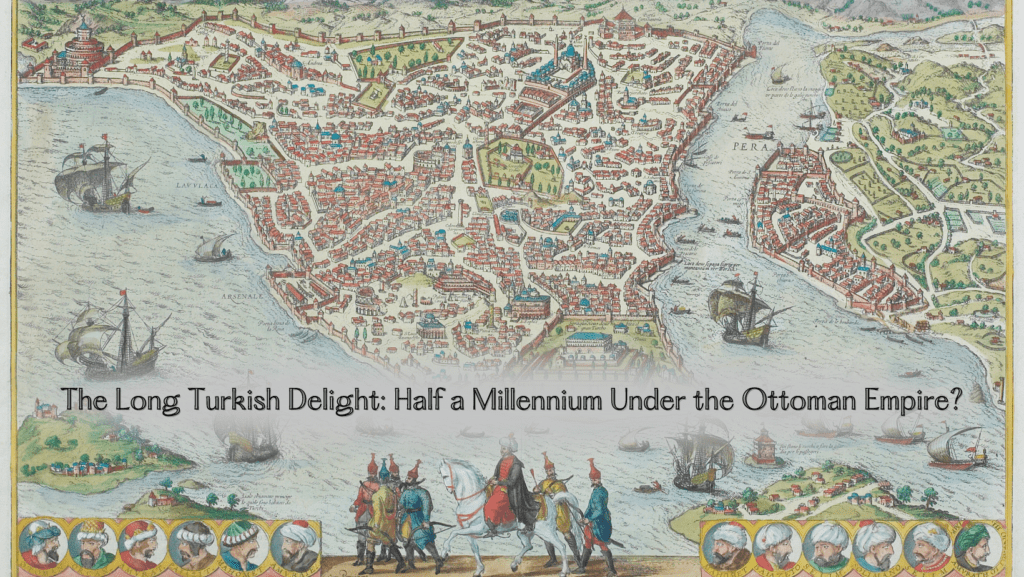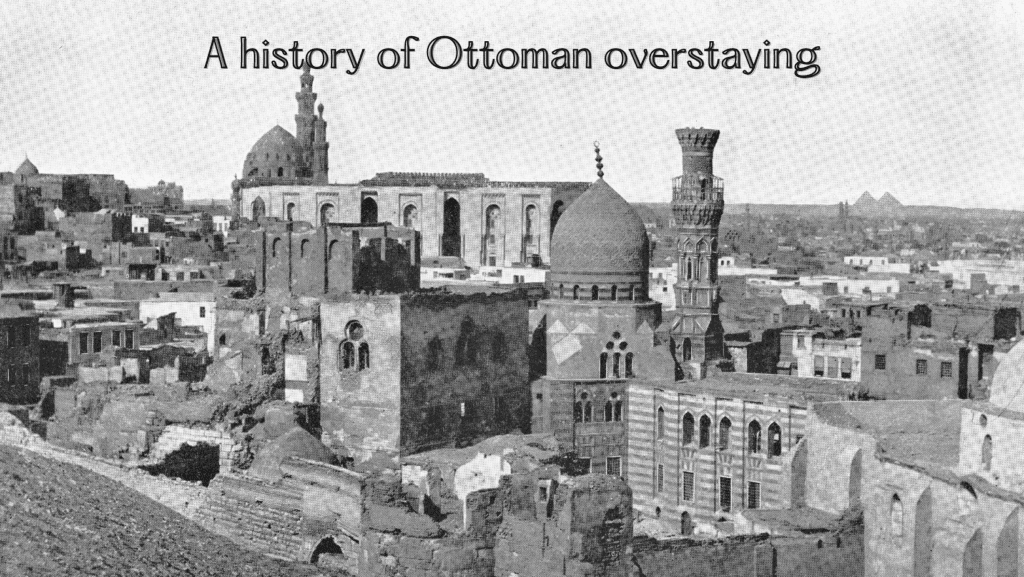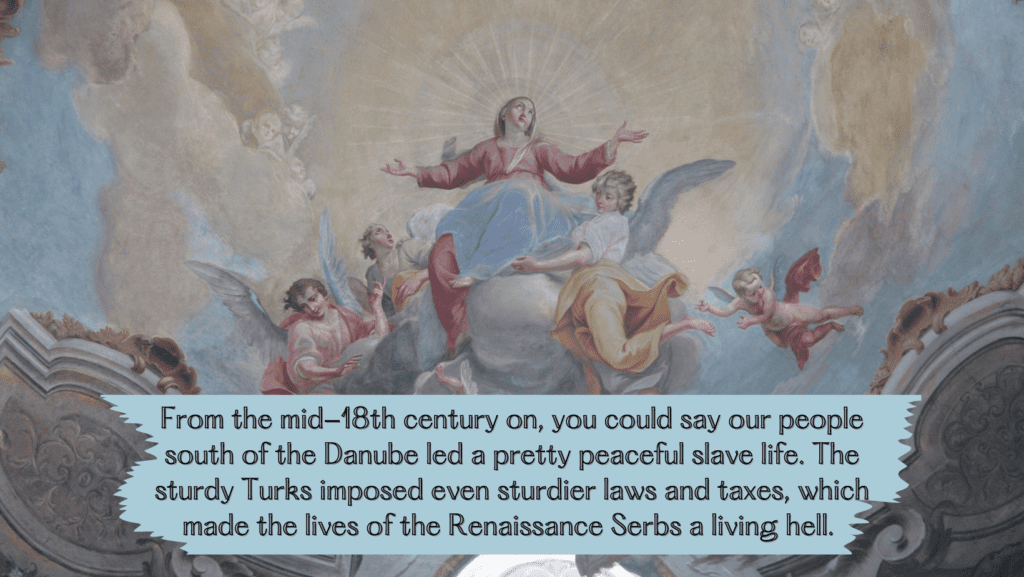The Long Turkish Delight: Half a Millennium Under the Ottoman Empire?
Welcome to a very special edition of the MythBusters! Today we’re going to take great pleasure in busting the longest-living myth about Serbia and a huge portion of our history.

Serbia’s relationship with Turkey is as delicate as a love triangle in a popular Turkish soap opera. Since we were able to speak, our parents have taught us that the Ottomans (present-day Turks) ruled Serbia and the Balkan peninsula for five centuries. Yet, like with most things in life, the reality is far less truthful than the myth—but equally exciting! (If you’re into wars and uprisings.)
The Ottomans’ impact on Balkan culture was epidemic: it infected everything from language and customs to fashion, architecture, and cuisine. Let’s take a deep dive into history and see what 500-ish-old wounds still haven’t healed.
(All you history-hating people, go read something else.)
A history of Ottoman overstaying
The Ottoman Empire’s rule over the Balkan people lasted for almost 500 years, almost being a crucial word here. While that number gives a rough estimate of the suffering of our people, it depends on which part of the Balkan map you’re looking at.
The Ottomans first arrived in 1389 and wouldn’t leave until the early 20th century, so you get why we round it up to 500 years, five centuries, or half a millennium when we talk about their overstaying their welcome. (They weren’t really invited, though, so welcome is a bit generous.)
In 1389, the conquering Middle-Age Turks beat the crap out of Christian forces at the Battle of Kosovo. Yet they hadn’t shown their faces anywhere near Balkan for the next 50 years. The reason? They were too busy fighting the Mongols. Serbia officially fell under Turkish rule in 1459 with the capture of Smederevo fortress.
By the end of the 16th century (1522), the entire country of Serbia was occupied. Luckily, the north found a way to be free from the baklava-eating, kilim-riding Turks, by falling under Habsburg rule. The Habsburg monarchy, also known as the House of Austria, ruled the Austro-Hungarian Empire for more than 600 years. They wanted to take a good portion of our already-occupied land, so they fought terribly with the Ottomans.
(Both the Ottoman and the Austro-Hungarian empires dissolved in the early 20th century, after wars were waged against their tyranny. That’s a great lesson in imperialism: if you want your empire to last, don’t be a tyrant.)

When their imperial conflict was resolved, the Habsburgs managed to snatch the north and a bit of the northeast of the Serbian territories. After 1739, the Danube and the Sava rivers were set as the border between the Ottomans and the Habsburgs.
All is quiet on the Balkan front
From the mid-18th century on, you could say our people south of the Danube led a pretty peaceful slave life. The sturdy Turks imposed even sturdier laws and taxes, which made the lives of the Renaissance Serbs a living hell.
There were a few uprisings here and there, but the Ottomans knew how to instill fear and obedience in their subjects. They would brutally punish the rebels (think Vlad the Impaler and his methods of torture, but a tad more mellow) and anyone who they suspected was aiding the rebels. They were so furious at one of the uprisings that the leader of the Ottoman army, the infamous Sinan Pasha, ordered his men to burn the holy remains of our most sacred saint, Saint Sava.
Two great uprisings in 1804 and 1815 revealed a new face of our people: we were done with oppression and we wanted our land back. And we got it! In 1912.
We are, as a nation, the epitome of the famous saying: it doesn’t matter how slowly you go as long as you don’t stop.
By the time we declared the First Balkan War, the Turks had already started to abandon ship. We took advantage of their weak foreign and domestic policies—and the fact that no one really liked the Muslims on a Christian-oriented continent—and finally kicked them out. The people, I mean, not their culture, customs, language, fashion, or cuisine.
A weird case of the Stockholm syndrome
Serbian historians agree that our people have started to exhibit a strong “mentality of slaves.” After all, we’ve been under military and cultural occupation since the late 14th century. The fact that our men had to carry arms for so long had left a mark on our collective subconscious.
Perhaps that is best reflected in our belligerence and great commandership. Our people have always had phenomenal military leaders and strategies for winning. In the First and Second World Wars, we managed to win a couple of fierce and strategically important battles for the Allies. We did suffer great loss, and slow-healing wounds were inflicted, but we fought in the name of freedom that we have been longing for since the Ottomans knocked on Europe’s door.
Joining forces with other oppressed nations in the region and kicking out the Turks from our lands was a terrific accomplishment. Serbs, Bulgarians, Greeks, Macedonians, and Montenegrins arose from the ashes of their ancestors and vanquished the enemy together. I’m not saying it was epic, but imagine all the races of Middle Earth fighting against Sauron.
And just when you thought the Turks left the chat, I am here to tell you that their legacy still lives on. They may not be present physically, but the Balkan peninsula has remained under their tremendous influence.
We use a lot of Turkish words in our everyday language, for things like window, door, road, fight, and love. They built baths and kafanas, introduced the coffee-drinking custom, built homes with tall walls and spacious gardens, and decorated them with their intricately-woven rugs and kilims. They influenced our musicians and players and had us invent national dances similar to theirs. They brought nargiles, baklava, and sarma to the Balkan, and once they were gone, we kept it all.

But for how long did the Turks actually linger in these parts? It depends on the part.
- Kosovo and Metohija: 485 years
- Southeastern Serbia: 482 years
- Western parts and Šumadija: 330 years
- Montenegro: 217–429 years
- Belgrade: 393 years
- North/Vojvodina: 179 years
- Bosnia: 350–415 years
- Macedonia: 518
Apparently, those five hundred centuries are truly a myth, unless you live in Kosovo, the southeastern parts of Serbia, or Macedonia. Whatever the period of time we spent under their brutal rule, the consequences are here to stay.
The love-hate relationship
One of the direst consequences is that our people refuse to vacation in Turkey. Once in a while, you’ll meet a person or two who share their most exciting summer stories from Greece, Montenegro, and Bulgaria. If you dare to bring up Turkey as a potential summer destination for their next trip, they’ll look you straight in the eyes, won’t blink for good 5–10 seconds, and open their mouths wide. “Why on earth would you go to Turkey for your vacation? Haven’t we had enough of them for 500 years?”

As a matter of fact, no, we haven’t had them here for that long. In reality, the south of Serbia and the entire present-day country of Northern Macedonia have had more than enough Turkish influences since they actually ruled over these parts for about half a millennium. Maybe that’s why these parts are very different and quite Middle-Eastern like. Cities like Niš, Leskovac, Pirot, and Vranje have kept much of the traditions, customs, and even manners of speaking from our oppressors.
Perhaps it is a type of Stockholm syndrome, but, boy, do we love our sarma and baklava.
Truly yours,
Vanja
